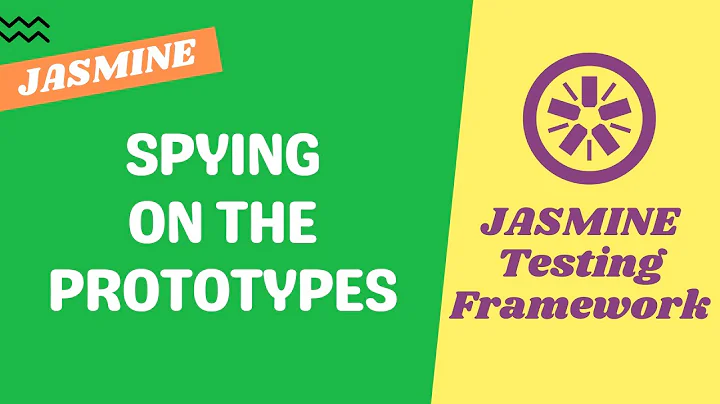Jasmine Spies.and.stub method
Solution 1
For the term, you can look at wikipedia : http://en.wikipedia.org/wiki/Test_stub
In a nutshell it's a "fake" object that you can control that replaces a "real" object in your code.
For the function, what I understand is that and.stub() removes the effect of and.callThrough() on a spy.
When you call and.callThrough, the spy acts as a proxy, calling the real function, but passing through a spy object allowing you to add tests like expectation.
When you call and.stub, or if you never call and.callThrough, the spy won't call the real function. It's really usefull when you don't want to test an object's behavior, but be sure that it was called. Helping you to keep your test truly unitary.
Solution 2
To complete the previous answer:
Indeed, it's not clear from the doc, but it's very clear in the source code:
plan = function() {};
-> the called function is empty
this.callThrough = function() {
plan = originalFn;
-> the called function is the original function
this.stub = function(fn) {
plan = function() {};
-> the called function is empty (again)
Related videos on Youtube
Ratko
Updated on August 23, 2022Comments
-
Ratko almost 2 years
I've been reading through the Jasmine documentation and I've been struggling to understand what the Spies
.and.stubmethod actually does. English is not my native language, so I don't even know what the word "stub" actually means, and there is no translation for it in my language.In the documentation it says:
When a calling strategy is used for a spy, the original stubbing behavior can be returned at any time with and.stub.
describe("A spy", function() { var foo, bar = null; beforeEach(function() { foo = { setBar: function(value) { bar = value; } }; spyOn(foo, 'setBar').and.callThrough(); }); it("can call through and then stub in the same spec", function() { foo.setBar(123); expect(bar).toEqual(123); foo.setBar.and.stub(); bar = null; foo.setBar(123); expect(bar).toBe(null); }); });What does
and.stubactually do and how is it useful? -
Ratko over 9 yearsThank you very much. The fact that the and.stub() removes the effect of and.callThrough() is what's missing on their documentation. It really explains everything.
-
aycanadal over 5 yearsHow is it different then
spyOn(foo, 'setBar')without.and.callThrough()? -
Manu Chadha over 5 yearsagree with aycanadal. What is the use of
stubas justspyOnseems to do the same thing. if I dospyOn(foo,'setBar'),setBar's original implementation will not be called. In fact it seems,stubis same as callingand.callFake(()=>{}) -
 Boris Charpentier over 5 yearsjasmine mix the concept of spy and stub in it's syntax. A stub replace the implementation where a spy only act has a passthrough calling the actual implementation. To have a real spy you need to do
Boris Charpentier over 5 yearsjasmine mix the concept of spy and stub in it's syntax. A stub replace the implementation where a spy only act has a passthrough calling the actual implementation. To have a real spy you need to dospyOn(..).and.callThrough(). But you can re-enable the stub withand.stubafter callingcallThrough. Agreed it's mainly sugar !and.callFakehas a similar result. -
 coppereyecat almost 3 years@ManuChadha You may know this by now, but in case someone reading these comments is still confused: the point is to have a way to reset the spy to the default behavior after you have changed the behavior of the spy with
coppereyecat almost 3 years@ManuChadha You may know this by now, but in case someone reading these comments is still confused: the point is to have a way to reset the spy to the default behavior after you have changed the behavior of the spy with.and.callThrough()orand.callFake(), etc, for a given test, for example if you do not want the call through or call fake behavior on other tests running with that spy.









